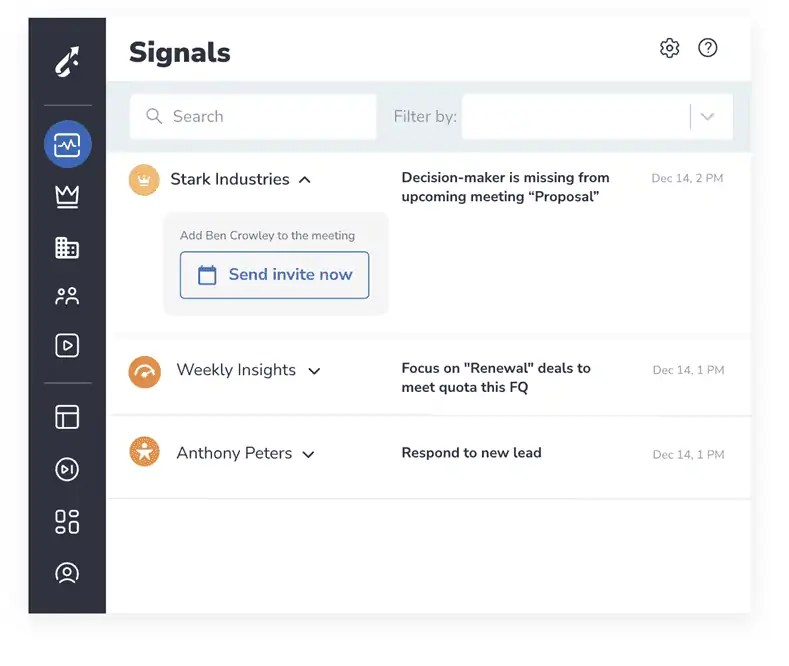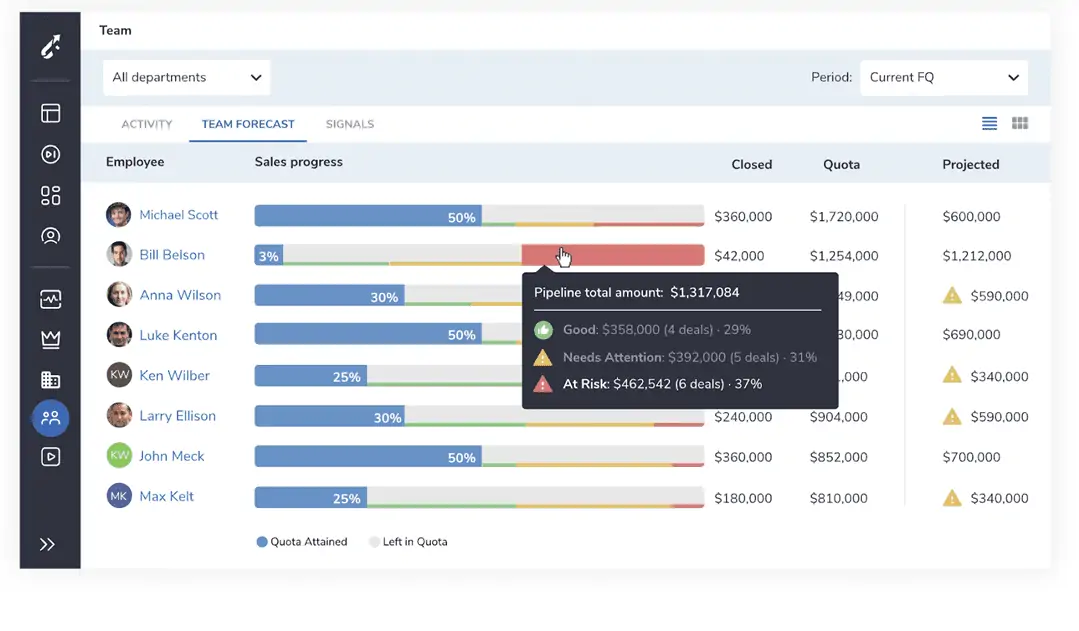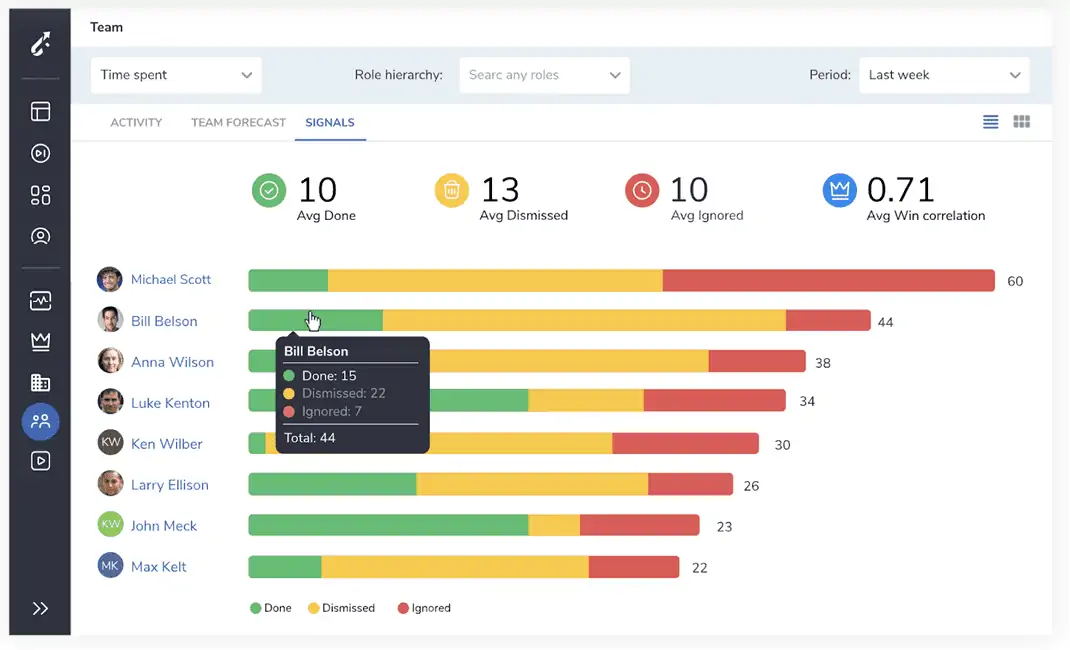Account planning marries big data analytics and strategic planning with human relationships to tackle the challenges of today’s complex, fast-paced sales landscape.
The strategy rejects the idea of looking at sales opportunities in black-and-white terms — where deals are either open or closed and “wins” represent the end of the journey. Instead, account planning is about making the most of existing relationships — driving revenue by continuously delivering value to existing accounts.
Here, I’ll explain what account planning is, the benefits it brings to the table, and then, share some best practices for implementing this strategy in your own organization.
What is Account Planning?
Account planning is the process of mapping out important details about a new prospect or existing customer, including information about their decision-making process, the companies you’re competing with to close them, and the overall strategy to win them over, retain and grow them.
Sellers aim to uncover buyer needs, problems, and pain points on an ongoing basis and use that information to keep earning their business — by providing valuable insights and solutions.
It’s important to understand that account planning is a continuous process of researching, strategizing, and presenting solutions that speak to where the account — and the market — stand today. Done right, account planning boosts retention rates and customer lifetime value, and it helps organizations maintain predictable cash flow.
Account Planning vs. Account Management
Now, before we move on, it’s important to note that account planning and account management are often used interchangeably, but actually describe two different things.
| Account Planning | Account Management |
|---|---|
| Strategic process focused on long-term growth opportunities | Operational process focused on day-to-day account maintenance |
| Creates detailed roadmaps for account development | Identifies and prioritizes which accounts require attention |
| Focuses on understanding customer needs and providing solutions | Focuses on allocating time and resources based on account value |
| Forward-looking and proactive | Present-focused and responsive |
| Involves multiple stakeholders across departments | Primarily involves the account manager or sales rep |
Account management is a methodical process of identifying and prioritizing the accounts that require more attention, and from there, allocating time and resources based on what’s available.
Account management focuses on selecting high-value or high-profit accounts to nurture to maximize growth or revenue. But – not every account requires a dedicated plan.
Account management often supports account planning, in that, it’s used to identify the accounts that could benefit from an account plan – that way, sales teams can focus their efforts on high-impact accounts.
Account Planning Benefits
If you’ve spent any time at all in the sales game, chances are, you already understand the value of nurturing customer relationships — and how those relationships impact the bottom line.
If you need more convincing as to why account planning, as a dedicated strategy matters, here’s a quick look at the benefits it brings to the table:
- Close deals faster: Account planning centers on generating more revenue from existing accounts. This means sellers can bypass the earlier stages in the sales process and focus on closing high-value sales with customers who already trust your company. This ability to skip ahead several steps inevitably leads to increased sales efficiency and more predictable wins, which can be further enhanced with effective sales forecasting.
- Reduce acquisition costs: Finding and converting new prospects consumes significant time and money. Strategic account planning allows sellers to focus on existing accounts rather than starting from scratch each time. Organizations can redirect resources from lead generation to developing deeper, more personalized content for existing customers, a key aspect of sales kickoff meetings.
- Increase customer lifetime value (CLV): It costs approximately 5x more to acquire a new customer than to retain an existing one. Moreover, increasing retention by just 5% can generate a 25-90% increase in profit. Account planning focuses on nurturing your most valuable accounts to increase contract size, win renewals, sell upgrades, and capitalize on cross-selling opportunities—all contributing to higher customer lifetime value, which is crucial for closing more deals.
- Retain key relationships: Account planning requires frequent communication between buyer and seller, positioning sales teams to stay attuned to customers’ evolving needs. This ongoing dialogue enables sellers to proactively provide valuable insights and solutions, increasing customer satisfaction and loyalty.
- Improve forecasting accuracy: With deeper knowledge of your accounts’ business cycles, challenges, and opportunities, you can more accurately predict when deals will close and their potential value, leading to more reliable revenue forecasts, a key benefit of effective sales forecasting.
- Identify whitespace opportunities: Systematic account planning helps uncover unaddressed needs or departments within customer organizations that could benefit from your solutions, creating new revenue streams from existing relationships.
Account Planning Templates and Resources
Implementing effective account planning is easier with the right templates and frameworks. Here are essential resources to streamline your account planning process:
Core Account Planning Templates
| Template Type | Key Components | When to Use |
|---|---|---|
| Account Overview Template | Company profile, key contacts, business challenges, strategic initiatives, competitive landscape | Initial account assessment and quarterly reviews |
| Relationship Map Template | Organizational chart, stakeholder analysis, influence mapping, relationship strength assessment | Understanding decision-making dynamics and identifying relationship gaps |
| Opportunity Plan Template | Opportunity details, solution alignment, value proposition, decision criteria, competitive position, action plan | Planning for specific sales opportunities within the account |
| Strategic Account Growth Plan | Current situation analysis, growth objectives, whitespace map, expansion strategies, resource requirements | Annual planning for high-value strategic accounts |
| QBR/EBR Template | Relationship summary, performance metrics, success stories, future roadmap, action items | Quarterly business reviews with customers |
Best Practices for Template Usage
- Customize for your business: Adapt templates to reflect your specific industry, sales process, and customer relationships, much like the customization possible with account-based selling solutions.
- Keep it actionable: Focus on clear next steps and responsibilities rather than excessive background information.
- Make it collaborative: Design templates that facilitate input from multiple team members, similar to the collaboration enabled by sales planning tools.
- Ensure CRM compatibility: Align templates with your CRM structure for seamless data integration, a key feature of account planning platforms.
- Balance detail with usability: Include enough information to be valuable without becoming overwhelming, much like the balance achieved with sales forecasting tools.
By leveraging these templates and resources, you can standardize your account planning process while maintaining the flexibility to address each customer’s unique needs and opportunities, a key principle of account-based selling.
Account Planning Strategy Best Practices
So, account planning is part of a broader account-based selling strategy, a sales approach that centers on developing an individualized plan for each account. That means every account plan will look different – even within a single organization – with individual needs, challenges, opportunities, competitors, etc. informing the strategy.
Still, there are some general best practices to keep in mind while writing any account plan. Here’s a look at some of the big ones.
Make sure you have all of the data you need
Given that sales has evolved into a data-driven practice, account planners need access to the complete picture.
To get started, you’ll need access to the following data:
- Communication history
- Website analytics
- Competitive and market intelligence
- Sales analytics
- Buying and browsing behaviors
- Etc.
Revenue Grid allows users to capture data from all connected sources and break down silos that create barriers to actionable sales insights. That data can then be used to create predictive forecasts, automated sequences, and enable AI-driven guided selling capabilities.
Identify which accounts need an account plan
This points back to the concept of strategic account management. Early on, you’ll want to make a list of all existing accounts. Try to include as many details as possible. For example:
- Company info
- Purchase history
- Prior interactions
- Key decision-makers/points of contact
- Account structure
From there, aim to calculate the potential revenue for each account and the likelihood of generating new sales, renewals, upgrades, whatever.
Revenue Grid’s Pipeline Signals can help sales teams score opportunities — allowing reps to focus on the right opportunities. More than that, it also helps sellers understand why certain accounts have certain scores — and what factors influence wins and losses. This, in turn, allows teams to get better at identifying risks and turning things around before it’s too late.
Uncover the needs of each account
Once you’ve determined which accounts need a plan, you’ll want to dig into your customer intelligence data to uncover needs, pain points, and opportunities to provide value.
Use the research you’ve gathered about market conditions, your competitors, and customer interactions and buying behaviors, and try to answer the following questions:
- What challenges is the customer facing right now?
- What new needs have emerged?
- What concerns do they have?
- What problems are they trying to solve?
- What are the client’s primary goals?
- How do they measure success?
- What is their current plan for achieving critical objectives?
- Who is involved in the decision-making process?
- Is there an opportunity to fill an unmet need?
Understanding the unique challenges and needs associated with each account is a critical step toward building strong, lasting bonds with your customers. Here, the goal is to find ways that your products/services can help each customer be successful.
Put together a step-by-step plan for meeting client needs
Once you’ve defined client needs, you’ll need to come up with a step-by-step plan for meeting those needs. It helps to break your account plan into a series of stages — much like any other sales process — and assign a specific, measurable goal to each of those stages.
Now, again, it’s important to note that steps will vary by account. But – they might include things like:
- Analyzing the account
- Mapping the account structure
- Developing a plan for achieving short-term goals (i.e. convincing clients to renew a contract or upgrade their plan)
- Defining steps for achieving long-term objectives (i.e. hitting growth or revenue targets)
You can then reinforce account plans with Revenue Grid’s guided selling tools. For example, Revenue Signals helps reps prioritize actions, stay focused on the right accounts, and ensure they follow sales plays to a T.
Run regular account planning audits
Finally, it’s important that you run regular audits of your account planning strategy to ensure that you’re tracking against short and long-term objectives (both your own goals and your clients’).
Revenue Grid allows users to keep tabs on the pipeline and make sure that your account plans deliver the desired outcomes. For example, you can look at Team Forecasts for a high-level overview of seller performance.
Then from there, you might drill down and look at how each rep responds to Signals and use that information to refine the overall strategy.
Conclusion
While proper execution takes time and significant effort investing in this data-driven strategy stands to pay off many times over.
Done right, account planning benefits both buyer and seller. Sales teams can maximize their selling time and generate more revenue by staying focused on outcomes, while customers gain a trusted partner, invested in their success.
Jumpstart your account planning with Revenue Grid
Frequently Asked Questions
What is the difference between account planning and account management?
Account planning is a strategic process focused on developing long-term growth opportunities within key accounts through deep understanding of customer needs and creating tailored solutions. Account management is more operational, focusing on day-to-day account maintenance, prioritizing which accounts need attention, and allocating resources accordingly. While account planning is forward-looking and proactive, account management is present-focused and responsive. Both are essential, with account management often identifying which accounts warrant the deeper investment of creating a formal account plan, a process that can be enhanced with sales planning strategies.
How do I identify which accounts need an account plan?
Not all accounts require formal planning. Prioritize accounts based on criteria such as current revenue contribution, growth potential (upsell/cross-sell opportunities), strategic importance to your business, likelihood of renewal or expansion, referral potential, and competitive threat level. Typically, the top 20% of accounts that generate 80% of revenue deserve comprehensive planning, while another 30% might benefit from lighter planning. Consider both current value and future potential when selecting accounts for planning efforts, much like the approach used in sales forecasting.
What are the key components of an effective account plan?
An effective account plan should include: a business overview (company information, industry challenges, strategic initiatives); stakeholder mapping (key decision-makers, influencers, and their priorities); relationship assessment (strength of connections, engagement history); competitive analysis (other vendors, threats, your differentiation); opportunity assessment (current and potential deals, whitespace); strategic objectives (revenue targets, relationship goals); and a detailed action plan with specific tasks, owners, and timelines. The plan should be a living document that evolves as the customer relationship develops, much like the dynamic nature of account planning.
How can technology improve account planning?
Technology enhances account planning through automated data capture that eliminates manual entry and ensures complete relationship visibility; AI-driven insights that identify risks and opportunities; collaborative tools that facilitate team alignment; relationship intelligence that maps connections and influence; opportunity tracking that monitors progress against goals; and integration with CRM systems that centralizes all account information. Solutions like Revenue Grid provide these capabilities while seamlessly connecting with existing workflows, making account planning more efficient, data-driven, and effective, similar to the enhancements possible with account-based selling platforms.
How often should I review and update my account plans?
Account plans should be living documents with a regular review cadence: conduct monthly progress checks to ensure action items are being completed; perform quarterly strategic reviews to assess overall progress and make tactical adjustments; and complete comprehensive annual updates to realign with changing customer priorities and market conditions. Additionally, significant trigger events (leadership changes, mergers/acquisitions, new product launches, competitive threats) should prompt immediate plan reviews regardless of the standard schedule. Align review frequency with your sales cycles and the customer’s business rhythm, much like the approach used in sales forecasting.



